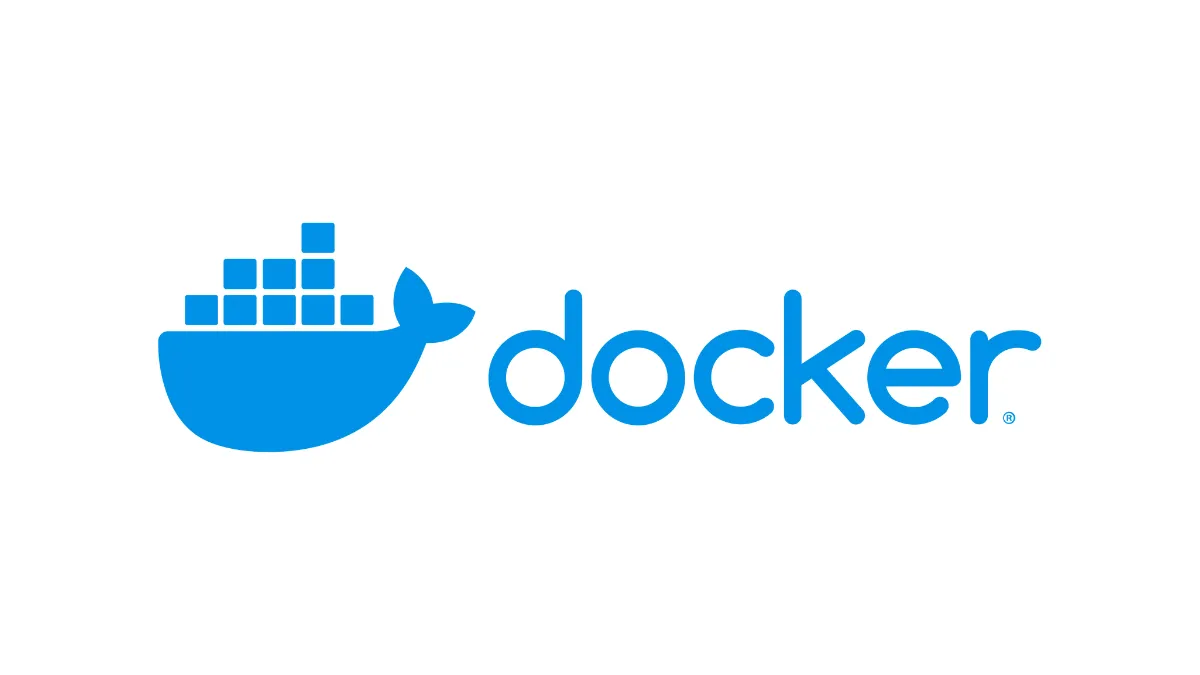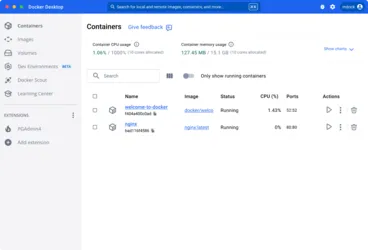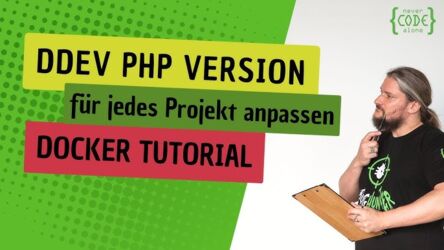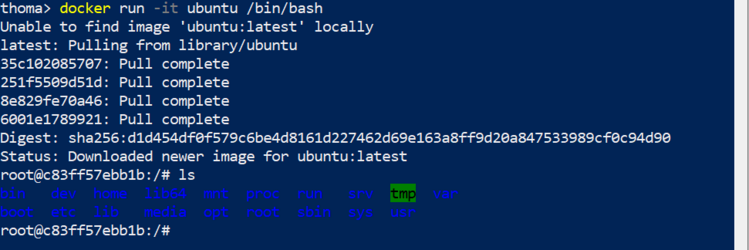
Table of contents
Introduction Docker
Docker is a leading open source containerisation platform that enables developers to build, package and run applications in isolated environments. Docker is revolutionising the way software is developed, tested and deployed by ensuring a consistent environment across different stages of development, testing and production. With Docker, developers can package complex applications into lightweight, portable containers that contain all necessary dependencies, greatly simplifying the deployment and scaling of applications.
Installation and setup of Docker
Für Ubuntu:
sudo apt-get update
sudo apt-get install docker-ce docker-ce-cli containerd.io
For macOS and Windows:
Download Docker Desktop from the official Docker website and follow the installation instructions.
After the installation, check the successful setup with :
docker --version
docker run hello-world
Configuration and customisation of Docker
Docker can be customised using various configuration files:
1. dockerfile: Defines how a Docker image is built.
Example:
FROM ubuntu:20.04
RUN apt-get update && apt-get install -y nginx
EXPOSE 80
CMD ["nginx", "-g", "daemon off;"]
2. docker-compose.yml: Orchestrates multiple container applications.
Example:
version: '3'
services:
web:
image: nginx:latest
ports:
- "8080:80"
db:
image: mysql:5.7
environment:
MYSQL_ROOT_PASSWORD: example
3. docker daemon configuration: Customise global docker settings in /etc/docker/daemon.json.
Use of Docker
Basic Docker commands:
1. manage images:
docker pull ubuntu:20.04
docker images
docker rmi image_name
2. start and manage containers:
docker run -d -p 8080:80 nginx
docker ps
docker stop container_id
docker rm container_id
3. interact with containers:
docker exec -it container_id bash
4. display logs:
docker logs container_id
5. use Docker Compose:
docker-compose up -d
docker-compose down
Integration in CI/CD Pipelines
Docker can be seamlessly integrated into CI/CD pipelines:
GitLab CI/CD example:
build:
image: docker:latest
services:
- docker:dind
script:
- docker build -t my-app .
- docker push registry.example.com/my-app
Jenkins Pipeline example:
pipeline {
agent any
stages {
stage('Build') {
steps {
sh 'docker build -t my-app .'
}
}
stage('Deploy') {
steps {
sh 'docker run -d -p 8080:80 my-app'
}
}
}
}

Reach our PHP Consultant specialists
We are experts in PHP and help you to master your digital challenges. Our experienced team supports you with PHP updates, PHP refactoring and advises you remotely on all questions relating to PHP. With our fully automated CI/CD deployments and a robust Docker infrastructure, we take your PHP projects to the next level. Rely on our expertise for reliable and scalable PHP solutions.
Frequently asked questions (FAQ)
What is the difference between Docker and virtual machines?
Docker containers share the host operating system, while VMs have their own operating system, which makes Docker more lightweight and efficient.
How can I share data between the host and a container?
Use docker volumes or bind mounts, e.g.: docker run -v /host/path:/container/path my-image
How do I update a running container?
It is recommended to stop the old container, create a new image and start a new container.
How can I limit the resource utilisation of containers?
Verwenden Sie Docker's Resource Constraints, z.B.: docker run --memory=512m --cpus=0.5 my-image
How do I secure sensitive data in Docker?
Use Docker Secrets for sensitive data and avoid storing it directly in images or container environment variables.
How can I secure Docker in a production environment?
Use rootless Docker, limit authorisations, keep images up to date and use tools such as Docker Bench for Security.
How does Docker networking work?
Docker offers various network modes such as bridge, host and overlay. Use docker network create and docker network connect for configuration.
How do I optimise the size of my Docker images?
Use multi-stage builds, minimise layers and remove unnecessary files in the Dockerfile.
How do I debug a Docker container?
Use docker logs, docker exec for interactive shells and Docker's debug mode with docker run --debug.
How do I manage persistence in Docker?
Use Docker Volumes for persistent data storage and configure them in docker-compose.yml or via the Docker CLI.
Conclusion
Docker has revolutionised software development and deployment by providing a consistent, portable and efficient way to containerise applications. By simplifying the development process, improving collaboration between development and operations teams, and enabling faster and more reliable deployment of applications, Docker has established itself as an indispensable tool in the modern IT landscape. With its robust ecosystem support, continuous improvements and growing community support, Docker remains at the forefront of containerisation technologies and is driving the future of software development and deployment.
Docker picture gallery
Discover the world of Docker in our comprehensive image gallery. Docker is revolutionising the way developers create, deploy and scale applications. Using container technology, Docker enables applications to run in isolated environments, making development and production processes more efficient and reliable. In our gallery you will find insights into Docker commands, the user interface of Docker Desktop and tutorials for individual customisations. Dive in and find out how Docker can optimise your development environment.

Docker Desktop Benutzeroberfläche, die laufende Container, ihren Status und Ressourcenverbrauch anzeigt.

Grafik für ein Docker-Tutorial mit DDEV, in der die PHP-Version für jedes Projekt angepasst wird. Person in einem schwarzen T-Shirt hält ein Klemmbrett.

